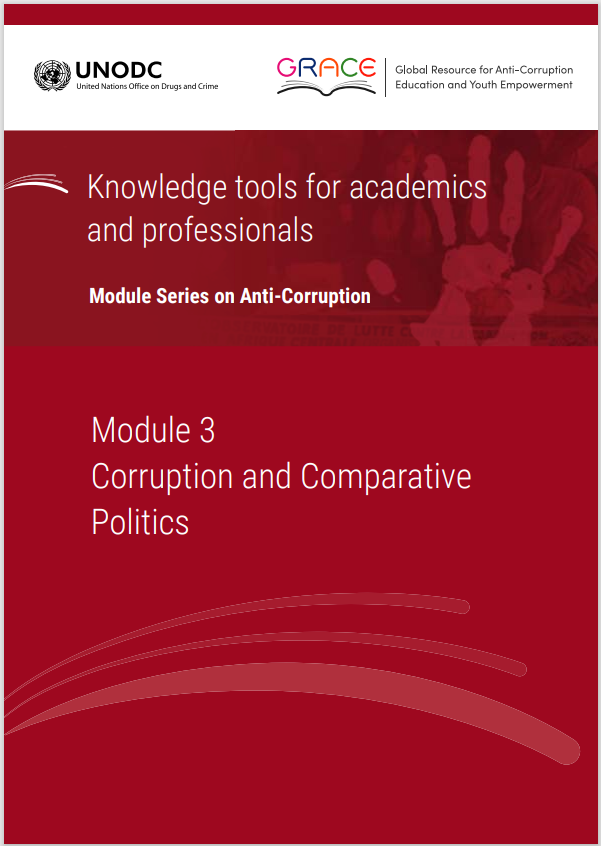This module is a resource for lecturers
Political institution-building as a means to counter corruption
North (1990) defines political institutions as "the rules of the game in a society or, more formally, … humanly devised constraints that shape human interaction". Over time, the term political institutions has come to include a variety of different entities including "voters, political parties, parliament, popularly elected authorities at a regional and local level, administration in a broader sense, supranational political and administrative organizations, courts of law, the ombudsman, the state auditor, interest groups and the media" (Goldmann, Pedersen and Østerud, 1997).
If defined in accordance with North, political institution-building can be an important tool in the fight against corruption. This is due to the fact that political institutions "define the participants in different political processes, and the rules and procedures according to which these processes are carried out", providing pointers as to what is feasible and allowed (Groop, 2013). This said, political institution-building should not be regarded as a panacea against corruption. Instead, institution-building, in most cases, needs to be complemented by other kinds of anti-corruption measures to be effective (for a more detailed discussion on national anti-corruption measures, see Module 13 of the E4J University Module Series on Anti-Corruption).
A fair amount of research has focused on the linkages between political institutions and both prevalence and levels of corruption. The main focus of researchers has been on political institutions such as the executive, the legislature, electoral rules and the territorial organization of the State. This research is discussed in detail in Groop (2013). A summary of this discussion is provided below.
Executives
With regard to executives, research points to a linkage between parliamentarism (characterized, among other things, by government as a rule being elected from within parliament and being dependent on parliamentary confidence) and the lesser prevalence of corruption. Shugart (1999) explains this by the fact that parliamentary systems engender strong parties, which force politicians to "subordinate their pursuits to the party's broader interests". Politicians in such systems are thus, according to Shugart, more likely to "provide policies aimed at broad national constituencies rather than at particularistic sectoral or regional constituencies", which reduces tendencies towards pork-barrelling (i.e. the appropriations of public funds for projects that serve local rather than general interests; see US-based legal definitions here).
Legislatures
Swamy and others (2001) have studied the relationship between female parliamentarians and levels of corruption. They find that levels of corruption are lower in countries with a higher percentage of female members of parliament. The authors speculate that the relationship may be linked to differences in terms of socialization and access to networks (for a more detailed discussion on the links between sex, gender and corruption see Module 8 of the E4J University Module Series on Anti-Corruption).
Electoral systems
A lot of research has been conducted on the linkages between electoral systems and rules and the prevalence of corruption. Findings, however, are far from unequivocal. Chang (2005), to take one example, has studied electoral systems with open-list proportional representation, arguing that candidates in these systems face greater uncertainty with regard to the electoral outcome as well as increased pressure to amass personal votes owing to intra-party competition. As a result, Chang theorizes that candidates are in dire need of resources to finance their campaigns, which in turn forces many of them to engage in corrupt activities.
The territorial organization of the State
Researchers have also taken an interest in the linkages between corruption and institutions such as unitarism (characterized by a strong centre) and federalism (characterized by a greater division of power between the centre and, for instance, provinces or States).
Gerring and Thacker (2004) find that federal States (especially presidential ones) are more susceptible to corruption than States with a different institutional set-up. They attribute this to a fragmented elective branch and public service, something that leads to divided authority, mixed messages, overlapping jurisdictions, red tape and overall chaos. Gerring and Thacker argue that "malfeasance is easily buried in [this] chaos". They also regard federalism as more prone to intimate contacts and personalized relations, which contributes towards increased levels of corruption.
 Next:
Conclusion
Next:
Conclusion
 Back to top
Back to top
